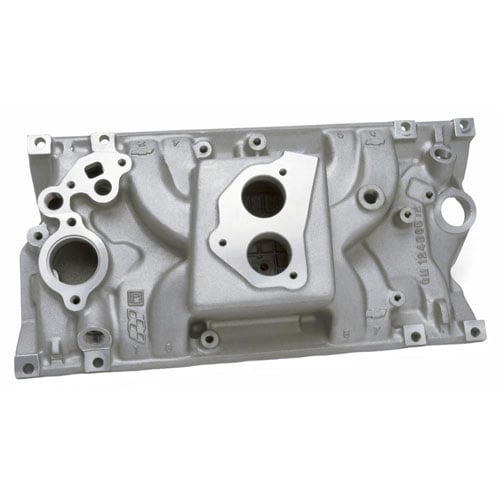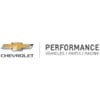Chevrolet Performance Vortec Throttle Body Injection Intake Manifold Cast Aluminum
809-12496821









Items You Need
Specifications:
I purchased a Chevy 350 5.7 with O.E. Cast Iron heads, and was recommended this manifold instead of the Edelbrock manifold. Will it fit?
Where do I put the coolant temperature sensor
If I upgrade my 94 5.7 with the later vortec heads is this the correct manifold to increase torque and horsepower? I plan on keeping the TBI so I don’t have to change other connections
Will this intake be able to support a big block tbi or is there another number for that kind of an intake
Is the port by the egr ok to run the bypass to water pump?
Are these compatible with the 5.0 and the 5.7?
The manifold says suggested routing for the coolant bypass is the 3/8 nspf. However, if this is used what connection would be used to connect the coolant temperature sensor? There's a 5/8 npt near the egr valve, can that be used for coolant bypass?
Is this compatible with the Holley 502-5?
Motor Vehicles
WARNING: Motor vehicles contain fuel, oils and fluids, battery posts, terminals and related accessories which contain lead and lead compounds and other chemicals known to the State of California to cause cancer, birth defects and other reproductive harm. These chemicals are found in vehicles, vehicle parts and accessories, both new and as replacements. When being serviced, these vehicles generate used oil, waste fluids, grease, fumes and particulates, all known to the State of California to cause cancer, birth defects, and reproductive harm.
Tools:
WARNING: Some dust created by power sanding, sawing, grinding, drilling, and other construction activities contains chemicals known to the State of California to cause cancer and birth defects or other reproductive harm. Some examples of these chemicals are: lead from lead-based paints, crystalline silica from bricks and cement and other masonry products, and arsenic and chromium from chemically treated lumber. Your risk from exposure to these chemicals varies, depending on how often you do this type of work. To reduce your exposure, work in a well-ventilated area and with approved safety equipment, such as dust masks that are specially designed to filter out microscopic particles.
Electrical Cords
WARNING: The wires of these products contain chemicals known to the State of California to cause cancer and birth defects or other reproductive harm. Wash hands after handling.

